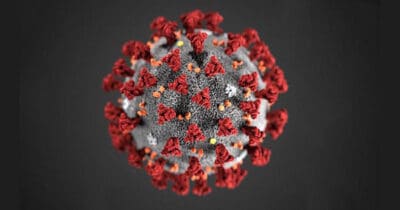 We’re hearing a lot about the importance of social distancing now that we are in the era of Coronavirus Pandemic. I wanted to explain a little bit about what that means. You can think of quarantine and social distancing as being on a continuum that extends from quarantine at one end of the spectrum, with social distancing in the middle, and regular-unrestricted activity all the way on the other end.
We’re hearing a lot about the importance of social distancing now that we are in the era of Coronavirus Pandemic. I wanted to explain a little bit about what that means. You can think of quarantine and social distancing as being on a continuum that extends from quarantine at one end of the spectrum, with social distancing in the middle, and regular-unrestricted activity all the way on the other end.
What is quarantine?
When someone is asked to quarantine, the goal is to completely prevent spread of the virus. To implement this we use gear like masks, gloves, gowns, as well as isolation rooms. If after a defined period of isolation, that individual doesn’t get sick, they can leave quarantine. If they develop symptoms, then they remain isolated for the duration of the illness. At this point we don’t know how long patients are contagious with COVID-19, but studies show that people can spread the virus anywhere from 8-37 days.
What is Social Distancing?
Social distancing is a less extreme form of isolation, with the goal of simply slowing down spread of the virus. Communities are asked to stop gathering in large groups. We are seeing cancellation of events that draw large crowds, schools, religious services, large parties, etc. People are still allowed to meet in small groups as long as they are feeling well. With the practice of social distancing, we acknowledge that there will be some spread of the virus because you can spread the virus for several days before you even develop symptoms.
Why bother with social distancing if you can still get infected?
The reason we bother at all is because, though we’ve missed the opportunity to prevent the pandemic, we now want to limit the damage it will do. COVID-19 is contagious and we recognize that thousands, if not hundreds of thousands, of people may get it. But we don’t want everyone to get it at the same time. If too many people get sick all at once, we overwhelm the hospitals and there won’t be enough doctors, nurses, hospital beds, breathing machines to go around. That is when death rates are the highest. If we simply slow down the spread of the virus, the pandemic may last longer, but the overall death rate won’t be as high.
But what should I be doing and not doing?
In an era of school closures, remote work arrangements, and travel bans, what are we actually supposed to be doing? People are asking themselves:
- Should I go to work?
- Can I go to the grocery store?
- Can my children hang out with their friends?
The answer to those questions will vary from person to person and town to town. Each person/family will decide based on their own risk tolerance how much they choose to socially isolate. In towns with lots of cases of COVID-19, the social distancing might include not going to the gym/library/restaurant, not hosting playdates for kids, not going to non-essential appointments. But in areas with less active disease, social distancing might include meeting in small groups with people you know well -who you trust would tell you about illness or sick contacts.
Here is a link to an excellent article that interviews several public health experts: “The Dos and Donts of ‘Social Distancing’” published in The Atlantic: https://www.theatlantic.com/family/archive/2020/03/coronavirus-what-does-social-distancing-mean/607927/
Even the experts don’t agree on what social distancing should look like right now. What we need to do is find a level of activity that is responsible, tolerable, and sustainable. The reality is, some of us still need to go to work. Some of us will need to leave the house for various things. Limit socializing for now. If you are going to be with other people, keep the group small and keep the distance between people 6 feet if possible. Choose activities that don’t require sharing utensils or game pieces. Use good hygiene practices like frequent hand washing. By all means, stay home if you feel unwell.
The main points to realize with social distancing are:
- The more social interaction you have, the more likely you will come into contact with the virus due to asymptomatic spread.
- The less social interaction you have, the less likely the virus will spread.
Hopefully everyone in their community will assess risk based on how much illness is in their vicinity. We all need to balance the health of our communities, support people whose work is affected, reach out to those in quarantine who might need support, protect the highest risk groups from exposure: the elderly and chronically ill. As individuals and as a community we can make an impact by taking social distancing seriously.
Bronwyn Fitz, MD is an Integrative Gynecologist and Functional Medicine doctor. Contact her to learn more about her practice or have a free 15-minute consult.
